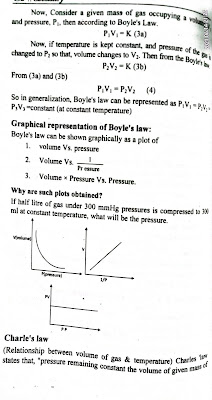Classification of elements and periodicity in properties
Why do we need to classify elements?
Before the 19th century only a few elements were known
so they could be easily studied but with time many more elements
were discovered and their compounds were prepared hands it was felt that these
elements should be classified into a few groups to make their studies systematic
and easier it is expected that a systematic classification will help us in
organizing the knowledge and predicting new elements for undertaking further
studies
Dobereiner’s triad
Dobereiner’s triad:
In 1829, a German scientist John Dobereiner classified certain elements
in a Group of three called triad which had similar chemical properties.
Dobereiner’s triad states that “when the elements in a triad were arranged in
the order of increasing atomic mass is the atomic mass of the middle element
was found to be approximately equal to the arithmetic mean of the other two
elements.”
Limitations
of Dobereiner’s Triad classification: Dobereiner’s method of classification could arrange only a limited
number of elements the idea of trades could not be applied to all elements
Newlands law of octaves
In 1864 John Newlands an English chemist and a musician
arranged the elements known at that time in order of increasing atomic mass
which state that the properties of each element resembled those of the 8th
element before it and off the 8th element following it in other
words he found that the properties of the elements were repeated at every 8th
element like the death note of an octave in music Newlands called this as the
law of octaves
The
drawbacks of Newland's classification are
he failed badly with dealing with heavier elements beyond calcium. The idea of
octaves could not be held for noble gases.
Lothar Meyer's atomic volume curve
In 1869 a German chemist Julius Lothar Meyer plotted a graph
of atomic volume versus the atomic mass of various elements he noticed that the
elements with similar properties occupied similar positions on the curve for
example lithium, sodium, potassium, rubidium, and cesium occupied the big position.
It is the first classification of elements which had a definite pattern and
periodicity in properties of elements
Mendeleev’s classification
The Russian chemist Dimitri Mendeleev arrange the elements
in the increasing order of atomic mass. He observed that the elements with
similar properties appeared at regular intervals the Mendeleev spirit law
states that, “the properties of the elements are a periodic function of their
atomic mass.”
In other words, according to this law when the elements are
arranged in increasing order of their atomic masses the elements with similar
properties are repeated at regular intervals
Mendeleev
periodic table:
The elements were known at
that time and are arranged in increasing order after atomic mass in a table
known as the periodic table. Elements having similar properties were placed in
vertical columns called groups and horizontal rows were called periods. When
the order of increasing atomic mass was not rigidly followed then he left gaps
in his periodic table and even predicted the properties of such elements.
For example, Mendeleev
had predicted the properties of elements with an atomic mass of 72 which he named eka-silicon.
Modern Periodic Table
Modern Period Table was designed by Henry Moseley in 1913
A.D. Modern Periodic Table states that “the properties of the elements are the
periodic function of their atomic number.”
In Modern Period table: The regular repetition in elements
occurs due to periodicity in the outer electronic configuration of elements. Isotope
does not need a separate position to the classification of an element based on the classification of elements. The left portion of the periodic table includes highly reactive
metals, the right includes highly reactive non-metals and the middle-portion includes
transition metals. Elements were divided into s, p, d, and f blocks.
























